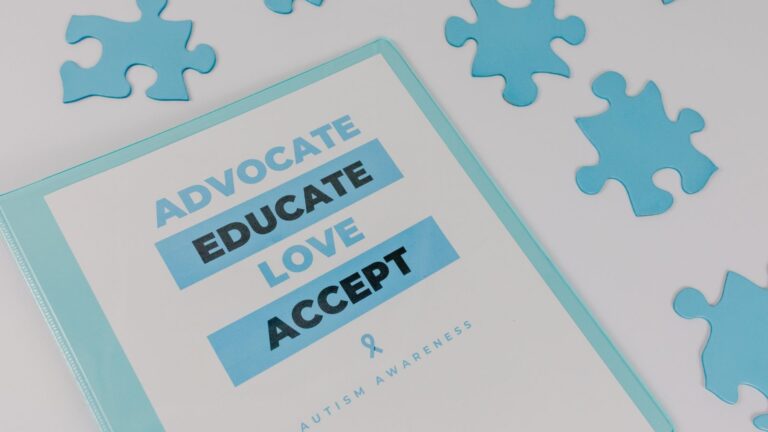The 2023 ADDM Community Report is in! The landscape of autism is constantly changing as new reports, statistics, and developments blossom yearly and change the scope of how we view care and awareness. Continuing data and analytics often highlight new approaches to therapy and other key revelations that can benefit the well-being of individuals with autism spectrum disorder (ASD) in various communities. However, various autism organizations found it challenging to harness this important data and conveniently send it to the masses.
Instead, the Children’s Health Act of 2000 authorized the Centers for Disease Control and Prevention (CDC) to establish the Autism and Developmental Disabilities Monitoring (ADDM) Network. This program sought to track statistical data and characteristics of children with ASD and other developmental disabilities in many communities throughout the United States.
At ABA Centers of America, we understand the ephemeral nature of autism statistics and how breaking developments can rapidly shift the means for reliable care. We’ve seen the significance of the ADDM Network firsthand and keep a close eye on any changes as they release. Since staying up-to-date is a top priority in the autism world, let’s explore the 2023 ADDM Community Report and learn more about the Network.
What is the ADDM Network?
The Autism and Developmental Disabilities Monitoring Network is a program created and funded by the CDC to collect analytical data on ASD and other developmental disorders. It helps highlight the number and characteristics of children with these disorders in various states in the U.S. Some of the primary goals of the ADDM Network are to:
- Measure progress in early autism identification.
- Indicate the population and diagnosis disparities of children with ASD.
- Provide information on the characteristics of children with ASD, such as sex, race, age of evaluation, type of diagnosis, and presence of intellectual disability.
- Identify changes in autism occurrence in the short- and long-term.
- Promote the importance and impact of autism awareness and related conditions in U.S. communities.
So why is this program important for the benefit of individuals with autism? The necessity of early identification and intervention remains at the forefront of autism care. By highlighting these statistics and how they differ by region, ethnicity, and other factors, our country can stay ahead of the curve and provide individuals and their families with the best possible treatment. The testing, screening, and diagnosis process for autism often presents challenges to these individuals, so granting them useful resources and key analytics is a must.
What is the 2023 ADDM Community Report on Autism?
The 2023 ADDM Community Report summarizes the main takeaways and findings from two reports by the CDC conducted in 2020. The findings include analyzed data from health and special education records of 4- and 8-year-old children from 11 different communities across the United States. These communities also reported autism-related data from 2018, which the CDC highlighted in their 2021 Community Report on Autism.
Who Benefits From the 2023 ADDM Community Report Findings?
The ADDM Network is a reliable source of useful autism-related information for many professionals, organizations, and families. Having clear and reliable access to this data provides families with the resources needed to test and screen their children. At the same time, organizations can harness this data to continue their efforts in autism care and therapy for those diagnosed. Meanwhile, service providers, education professionals, researchers, and policymakers can utilize the findings in this report to carry out various actions, including:
- Planning and strategizing support services
- Guiding autism research, such as the risks and protective factors of ASD and the interventions needed to help these individuals succeed
- Informing policies that promote better outcomes in education and healthcare
- Implementing strategies for de-stigmatizing ASD on a country-wide scale
5 Key Insights of the 2023 ADDM Community Report
Since the 2023 ADDM Community Report comprises data from the 2020 calendar year, the COVID-19 pandemic influenced the findings quite a bit. As such, much of the numerical data that trended in the proper direction before 2020 faced setbacks amid the global pandemic and extended quarantine. However, the pandemic didn’t affect all the findings, which is helpful as the CDC uses this data juxtaposed with their next report. Below are five key takeaways from the 2023 ADDM Community Report and what these insights mean for the future of autism care.
- Early ASD Identification Changes – Before this year’s report, children born in 2016 were 1.6 times as likely to receive an ASD diagnosis or special education classification by four years of age compared to children born in 2012. However, the COVID-19 pandemic decreased these numbers. Data shows that beginning around March 2020, these children born in 2016 received fewer ASD evaluations and identifications than those born in 2012 in the same age window.The reasons for this decrease are easy to understand – the quarantine in early 2020 prevented many families from taking the necessary steps for a proper autism diagnosis. The lack of available pediatricians, psychiatrists, and other behavioral technicians who usually make these diagnoses meant that children who likely needed a test or screening had to wait half to a full year to do so.
- Identification Percentages Increase – The 2023 report shows that the estimated percentage of 8-year-old children identified and diagnosed with ASD increasedfrom 1 in 44 to 1 in 36. These statistics show a continued increase from previous reports by the ADDM Network and highlight a positive trend in autism diagnosis. While the pandemic may have decreased the number of children seeking a diagnosis, this data shows that those who did seek out the testing and screening process received a diagnosis at a higher level than in previous years.
- Race/Ethnicity Identification Percentages Swap – Historically, differences in community prominence directly influenced the rates of early identification and diagnosis of autism in children. These underserved populations were less likely to seek out and receive diagnoses due to many factors, such as lack of resources, education, stigma, and access to affordable health coverage.Perhaps the most encouraging insight from the 2023 ADDM Community Report is that for the first time in history, the percentage of 8-year-old children of Black, Hispanic, and Asian or Pacific Islanders identified with ASD ranked higher than White children of the same age. This pattern indicates major improvements in normalizing and overall awareness of autism within different communities. It shows that equitable identification of ASD now reaches these historically underserved areas.
- Sex/Gender Disparities Continue – The rate at which boys and girls receive an autism diagnosis still varies significantly. In 2020, boys were nearly four times as likely to receive an autism diagnosis than girls. While research continues to uncover why this disparity exists, a good takeaway from the data is that for the first time, the percentage of girls identified with ASD surpassed 1%.
- Intellectual Correlation Grows – The 2023 report found that among diagnosed 8-year-olds with IQ scores available, 37.9% also had an intellectual disability (ID). Further, these children with an intellectual disability received a diagnosis earlier than those without a disability (43 months in children with an ID; 53 months in children without an ID).
What Do These Insights Mean to ABA Centers of America?
Since early identification and intervention remain at the forefront of our values at ABA Centers of America, these key insights from the 2023 ADDM Community Report help us take the necessary measures to ensure a reliable diagnosis for children in need. Our ABA therapy services work best when implemented at a young age, so if you believe your child may be on the spectrum, don’t hesitate to start the testing, screening, and diagnosis process.
Contact us at (844) 923-4222 for any questions regarding our ABA therapy services or to schedule a free consultation for your child.







